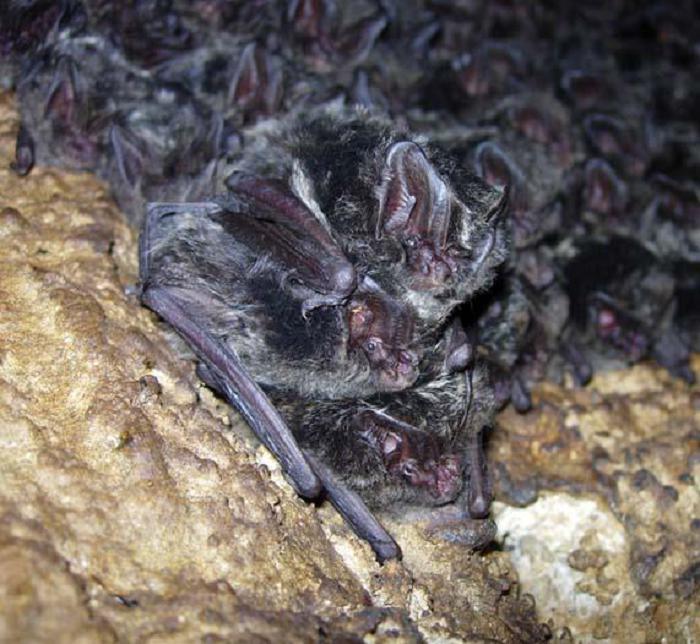Suren Gazaryan
The project is a survey of bats, conducted for this site and nearby territories, with special attention to caves and areas that are attractive for tourists and cavers

Cluster of barbastelles in Mayskaya cave.
The UNESCO World Heritage site «The Western Caucasus» was established in 1999 and is one of the few large mountain areas of Europe that has not experienced significant human impact and keeps a remarkable diversity of geology, ecosystems and species. This territory is also the most significant in Russia for the conservation of threatened woodland and cave-dwelling bat species like Myotis bechsteinii (Photo 1) and Miniopterus schreibersii.
A survey of bats will be conducted for this site and nearby territories, with special attention to caves and areas that are attractive for tourists and cavers. In the base of obtained data, conservation status of 24 bat species occurring in the Western Caucasus will be assessed in IUCN categories applied in the regional level. “Conservation Action Plan” will include species recognized as Threatened in global, national or regional levels. The “Plan” will contain direct recommendations on their protection and will be disseminated as among officials of the Caucasian State Reserve and the Sochi National Park – two largest protected areas of the Western Caucasus, as in governmental structures of Krasnodar region, Adyg and Karachaevo-Cherkessk republics.
Finally, all official persons and governmental organizations involved in conservation planning, tourist management or environmental control will know which bat species is Threatened in the Western Caucasus and what they must do to protect it best. Second, but essential, aim of this project is to increase the public awareness of the problem of bat conservation, focused on groups and communities that have major impact on bats – personal of Protected areas, tourists, cavers and scientists. Educational program will include public lectures with dissemination of posters, and detector workshop for conservationists who working in the region.